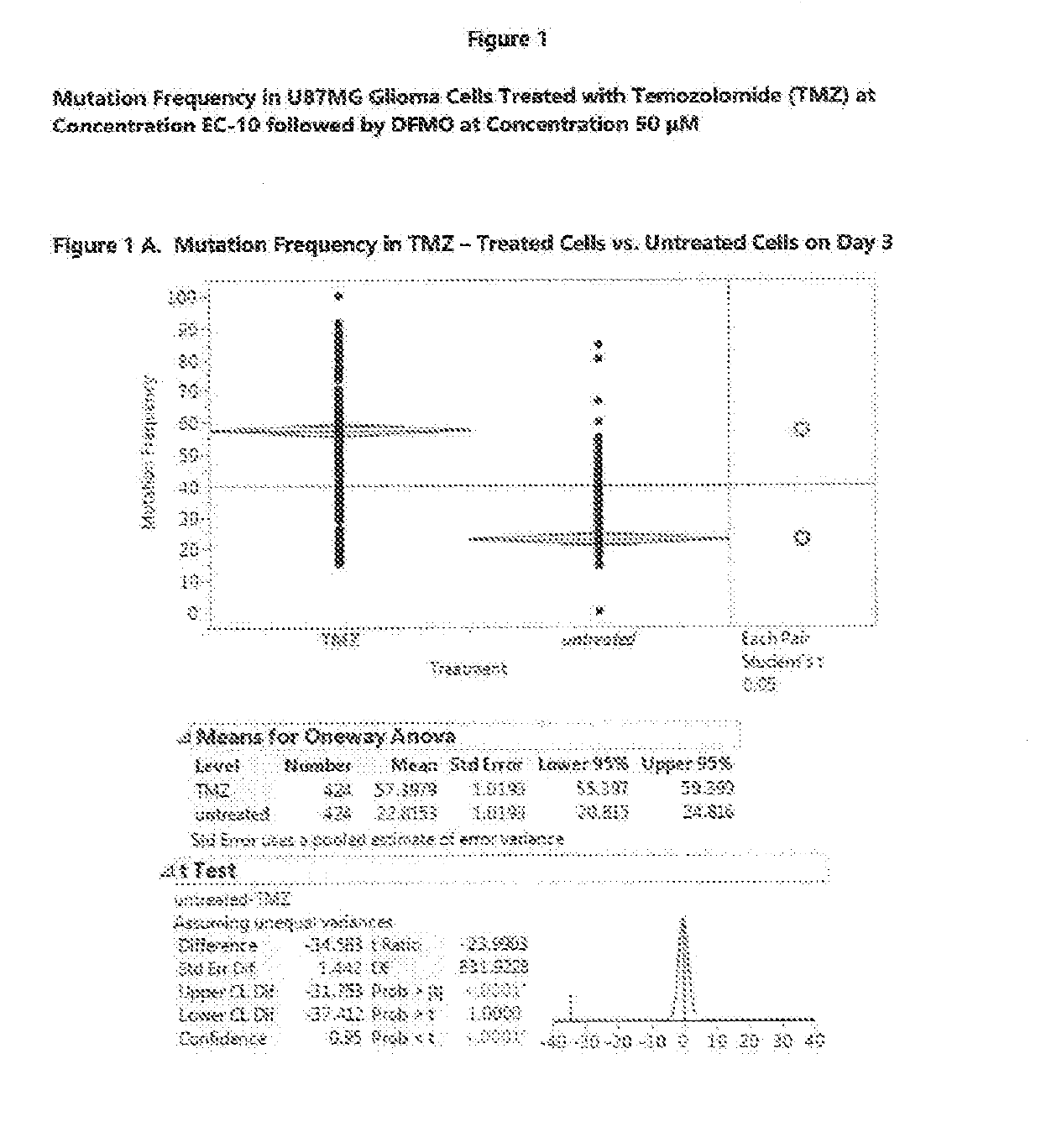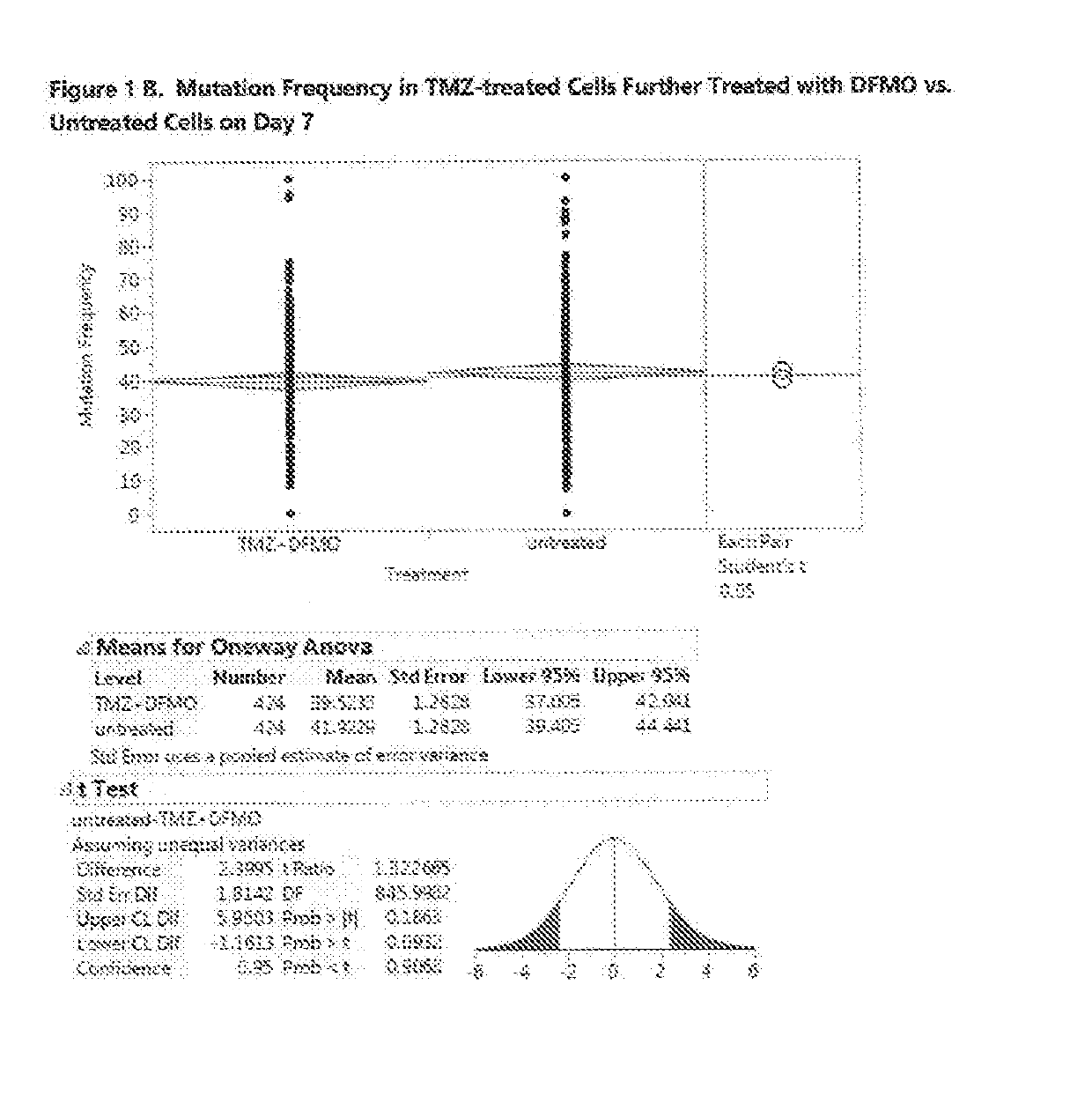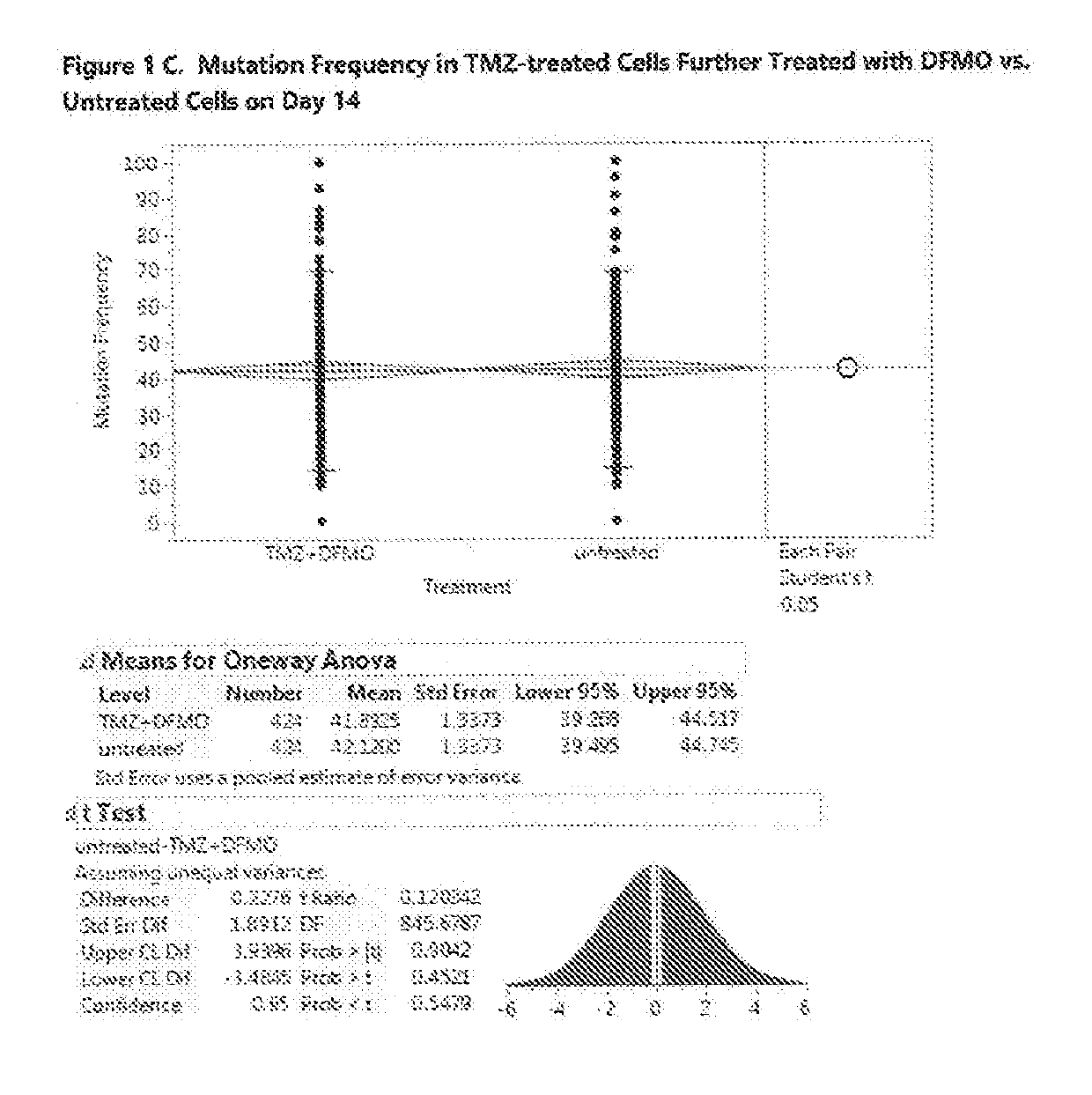Compositions and methods for use of eflornithine and derivatives and analogs thereof to treat cancers, including gliomas
a technology of eflornithine and derivatives, applied in the direction of pharmaceutical delivery mechanism, organic active ingredients, drug compositions, etc., can solve the problems of gliomas in the brain, headaches, seizures, focal weakness, etc., and achieve the effect of reducing the rate of glioma mutation
- Summary
- Abstract
- Description
- Claims
- Application Information
AI Technical Summary
Benefits of technology
Problems solved by technology
Method used
Image
Examples
example 1
Experimental Design to Determine the Effect of Temozolomide and Eflornithine on Mutation Frequency in a Glioblastoma Cell Line Model
[0575]A study was performed to explore the effect of temozolomide (TMZ) and eflornithine (DFMO) on mutation frequency of chromosomal abnormalities commonly attributed to primary cancers in a known glioblastoma primary cell line, U87MG.
[0576]Frozen U87MG cells were rapidly thawed in a 37° C. water bath, then slowly diluted using pre-warmed growth medium and plated at high density to optimize recovery. The cells were then harvested and placed in T75 flasks with final cell number of 4·106 cells / flask. The flasks were incubated overnight in humidified incubators at 37° C. with 5% CO2. TMZ solutions in DMSO were prepared at three different effective concentrations: EC-10, EC-20 and EC-50, and applied to the cells at 37.5 μL per flask. Effective concentration (“EC”) was determined in an earlier experiment wherein 50%, 20% and 10% cell survival when exposed to...
example 2
Effect of Temozolomide and Eflornithine on Mutation Frequency in Glioblastoma Cell Line Model (Data Analysis for TMZ Concentration EC-10, Eflornithine Concentration 50 μM)
[0579]Further analysis of eflornithine effect on mutation frequency was performed for the genes that were identified as susceptible to TMZ-induced mutations in at least one TMZ concentration. Statistical analysis of the Exon-Seq data was performed using JMP™ Software. The mutation frequencies were analyzed using ANOVA analysis of variance and the Student's t-test.
[0580]In this Example 2, the mutation frequency was analyzed for the U87MG cells treated with TMZ at EC-10 for three days followed by treatment with eflornithine at concentration of 50 μM for 7 and 14 days. FIG. 1A shows the effect of TMZ on untreated cells on Day 3. The ANOVA analysis and Student's t-test results show that TMZ has a statistically significant effect on cell mutations, raising the mutation frequency on day 3 from the average of 23% for untr...
example 3
Effect of Temozolomide and Eflornithine on Mutation Frequency in Glioblastoma Cell Line Model (Data Analysis for TMZ Concentration EC-20, Eflornithine Concentration 100 μM)
[0581]In this Example 3, the mutation frequency was analyzed for the U87MG cells treated with TMZ at EC-20 for three days followed by treatment with eflornithine at concentration of 50 μM for 7 and 14 days. FIG. 2A shows the effect of TMZ on untreated cells on Day 3. The ANOVA analysis and Student's t-test results show that TMZ has a statistically significant effect on cell mutations, raising the mutation frequency on day 3 from the average of 23% for untreated cells to 59% for the cells subjected to TMZ treatment. FIGS. 2B and 2C show the results of mutation frequency measured in cells after subsequent application of eflornithine on days 7 and 14, respectively. The results show that subsequent treatment with eflornithine brings the average mutation frequency level of TMZ-treated cells to a level statistically sim...
PUM
| Property | Measurement | Unit |
|---|---|---|
| time | aaaaa | aaaaa |
| time | aaaaa | aaaaa |
| time | aaaaa | aaaaa |
Abstract
Description
Claims
Application Information
 Login to View More
Login to View More - R&D
- Intellectual Property
- Life Sciences
- Materials
- Tech Scout
- Unparalleled Data Quality
- Higher Quality Content
- 60% Fewer Hallucinations
Browse by: Latest US Patents, China's latest patents, Technical Efficacy Thesaurus, Application Domain, Technology Topic, Popular Technical Reports.
© 2025 PatSnap. All rights reserved.Legal|Privacy policy|Modern Slavery Act Transparency Statement|Sitemap|About US| Contact US: help@patsnap.com



